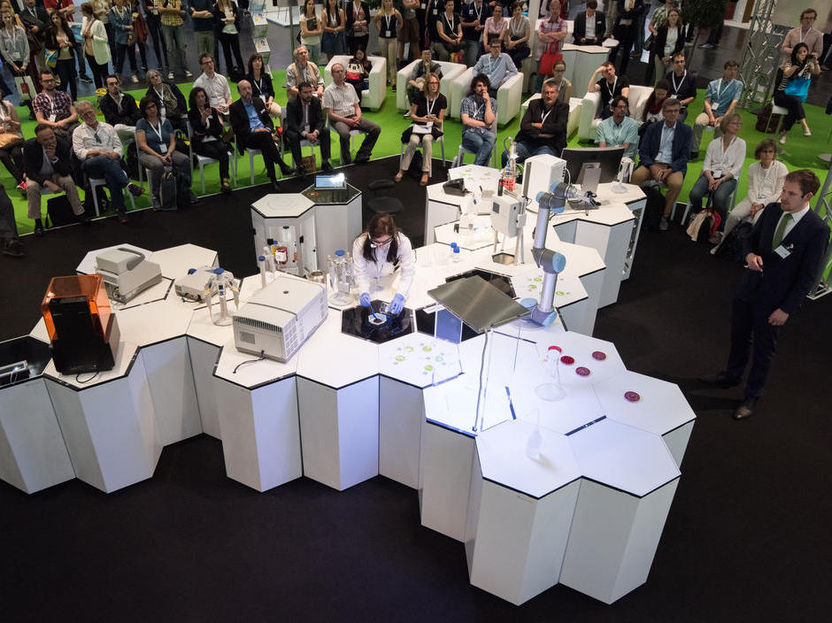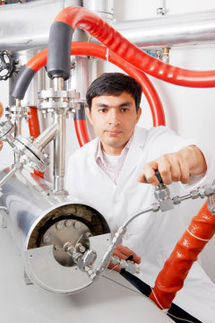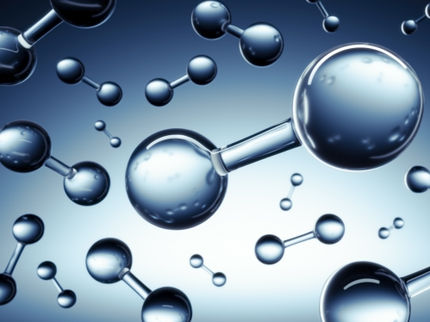It's solid: Storing hydrogen in a new form
As part of a tri-lab consortium, Lawrence Livermore National Laboratory researchers will develop tools and understanding necessary for designing new solid-state materials for storing hydrogen gas.
Storage of hydrogen onboard vehicles is one of the critical enabling technologies for hydrogen-fueled transportation systems that can reduce oil dependency and mitigate the long-term effects of fossil fuels on climate change.
Stakeholders developing hydrogen infrastructure are currently focused on high-pressure storage at 700 bar, in large part because no viable solid-phase hydrogen storage material has been developed. Solid-state hydrogen storage materials, including novel sorbents and high-density hydrides, are the focus of this project because of their unique potential to deliver hydrogen at lower pressures and higher onboard densities.
"There is general agreement that a successful solution would significantly reduce costs and ensure the economic viability of a U.S. hydrogen infrastructure," Brandon Wood, head of the Lawrence Livermore team, said. "Researchers have been looking at the storage problem for a long time, but there hasn't been enough focus on tackling some of the really challenging underlying problems, which is what we are tasked to do."
The consortium, called the Hydrogen Materials-Advanced Research Consortium (HyMARC), is led by Sandia National Laboratories and includes Lawrence Berkeley National Laboratory and Lawrence Livermore National Laboratory.
The consortium will address the gaps in solid-state hydrogen storage by leveraging recent advances in predictive multiscale modeling, high-resolution in situ characterization and material synthesis.
"By focusing on the underlying thermodynamic and kinetic limitations of storage materials, we will generate fundamental understanding that will accelerate the development of all types of advanced storage materials, including sorbents, metal hydrides and liquid carriers," Wood said.
The Lawrence Livermore team, which includes Wood, Tae Wook Heo, Miguel Morales, Stanimir Bonev, Ted Baumann, Jon Lee and Keith Ray, will use its capabilities in world-class supercomputing facilities and petascale materials modeling codes; expertise in large-scale simulation of hydrides and sorbents using quantum and continuum methods; synthesis of lightweight, tunable porous graphene-derived sorbents; and in situ X-ray spectroscopy.
Combined with materials informatics, this strategy embodies the approach highlighted within the recent Materials Genome Initiative (MGI) Strategic Plan for accelerated materials development.
Most read news
Other news from the department science

Get the chemical industry in your inbox
By submitting this form you agree that LUMITOS AG will send you the newsletter(s) selected above by email. Your data will not be passed on to third parties. Your data will be stored and processed in accordance with our data protection regulations. LUMITOS may contact you by email for the purpose of advertising or market and opinion surveys. You can revoke your consent at any time without giving reasons to LUMITOS AG, Ernst-Augustin-Str. 2, 12489 Berlin, Germany or by e-mail at revoke@lumitos.com with effect for the future. In addition, each email contains a link to unsubscribe from the corresponding newsletter.
Most read news
More news from our other portals
Last viewed contents
Category:Tungsten_minerals
Natural_ventilation
IL-2_receptor
Nanofiber_seeding
Leonotis_leonurus
Marasmus
Coumestan
Interleukin_20
Protein_kinase_A



























































